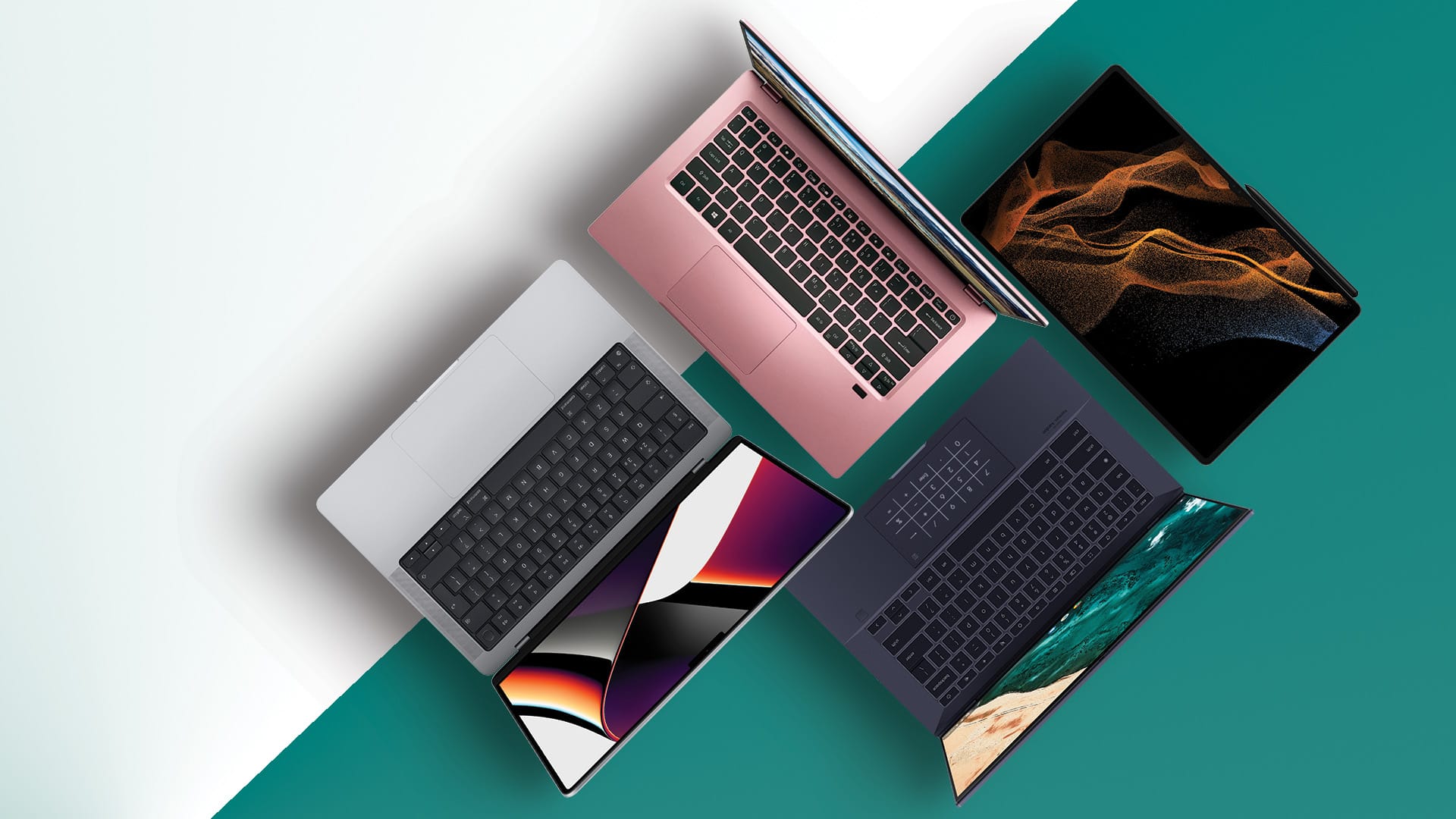Are you overwhelmed by the endless laptop options available today? You’re not alone. With hundreds of models flooding the market each year, choosing the right laptop can feel like navigating a maze blindfolded. After helping thousands of customers find their perfect match over the past decade, I’ve learned that the key isn’t finding the “best” laptop—it’s finding the best laptop for YOU.
Why This Guide Matters More Than Ever
The laptop landscape has evolved dramatically. Whether you’re a student cramming for finals, a creative professional editing videos, or a business traveler who lives out of airports, your laptop choice can make or break your productivity. One wrong decision, and you’re stuck with an expensive paperweight for the next 3-5 years.
I remember Sarah, a graphic design student who bought a budget laptop without considering her software needs. Three months later, she was pulling her hair out as Photoshop crawled along at snail’s pace. Don’t be like Sarah. This guide will save you from costly mistakes and buyer’s remorse.
Understanding Your Laptop Needs: The Foundation of Smart Shopping
Personal Use Categories
Students and Academic Work If you’re hitting the books, your priorities should be portability, battery life, and reliable performance for research, writing, and presentations. You don’t need a gaming powerhouse—you need a dependable workhorse that won’t die during that crucial 3-hour study session at the library.
Business and Professional Use Professional users require rock-solid reliability, excellent keyboard quality, and often need specific software compatibility. Security features become crucial when handling sensitive data, and a professional appearance matters during client meetings.
Creative and Media Work Video editors, photographers, and designers need color-accurate displays, powerful processors, and ample RAM. Your laptop becomes your creative canvas—compromise here, and your artistic vision suffers.
Gaming and Entertainment Gamers need dedicated graphics cards, high refresh rate displays, and robust cooling systems. But remember, gaming laptops often sacrifice battery life and portability for raw performance.
Key Specifications Decoded: What Really Matters
Processor (CPU): The Brain of Your Operation
The processor is your laptop’s engine. Here’s what you need to know without the technical jargon:
Intel vs AMD: The Eternal Debate Both offer excellent options in 2025. Intel typically edges out in single-core performance and power efficiency, while AMD often provides better value for multi-core tasks. For most users, either choice will serve you well—focus on the specific model rather than the brand.
Core Count Reality Check More cores aren’t always better. A quality 4-core processor often outperforms a mediocre 8-core chip for everyday tasks. Think of it like having four skilled workers versus eight unskilled ones—quality trumps quantity.
Memory (RAM): Your Digital Workspace
RAM is like your desk space. Too little, and you’re constantly shuffling papers (programs) around. Too much, and you’ve wasted money on space you’ll never use.
8GB vs 16GB vs 32GB
- 8GB: Adequate for basic tasks, web browsing, and light productivity
- 16GB: The sweet spot for most users, handling multitasking and moderate creative work
- 32GB: Overkill for casual users, essential for heavy video editing and professional workflows
Storage: Speed vs Space
SSD vs HDD: The Speed Revolution Solid State Drives (SSDs) have revolutionized laptop performance. Even a budget laptop feels snappy with an SSD, while an expensive machine crawls with a traditional hard drive. Always prioritize SSD storage—your future self will thank you every time your laptop boots in 10 seconds instead of 2 minutes.
How Much Storage Do You Actually Need? With cloud storage becoming ubiquitous, local storage requirements have evolved. 256GB handles most users comfortably, 512GB provides breathing room, and 1TB+ is for digital hoarders and content creators.
Display: Your Window to the Digital World
Size Considerations
- 13-14 inches: Maximum portability, perfect for frequent travelers
- 15-16 inches: Balanced approach, good for both portability and productivity
- 17+ inches: Desktop replacement territory, minimal portability
Resolution Reality 4K sounds impressive, but on a 13-inch screen, you’re paying for pixels you can’t discern while massacring your battery life. 1080p remains the practical choice for most users, with 1440p offering a nice middle ground for larger displays.
Budget Breakdown: Getting Maximum Value
Under $500: The Essentials
Budget laptops have improved dramatically. Focus on getting an SSD, at least 8GB of RAM, and a recent-generation processor. Skip the bells and whistles—reliability and basic performance matter most.
Recommended Features:
- AMD Ryzen 5 or Intel Core i5 processor
- 8GB RAM
- 256GB SSD
- 1080p display
- 6+ hour battery life
$500-$1000: The Sweet Spot
This range offers the best balance of performance, features, and value. You can afford better build quality, improved displays, and more storage without breaking the bank.
Enhanced Features:
- Premium build materials
- Better keyboard and trackpad
- Improved color accuracy
- Faster charging
- Optional discrete graphics
$1000-$2000: Professional Territory
Premium laptops in this range offer excellent build quality, superior displays, and performance that handles demanding tasks with ease.
$2000+: Enthusiast and Professional Powerhouses
High-end laptops provide cutting-edge technology, exceptional build quality, and performance that won’t limit your ambitions.
Brand Analysis: Beyond the Logo
Apple MacBooks: The Ecosystem Play
MacBooks excel in build quality, display quality, and integration with other Apple devices. The M-series chips offer impressive performance and battery life. However, you’re locked into Apple’s ecosystem and face limited upgrade options.
Dell: Business Reliability
Dell’s business lines (Latitude, XPS) offer excellent build quality and support. Their consumer lines provide good value but may lack premium features.
HP: Broad Appeal
HP covers every market segment. Their premium lines compete with the best, while budget options provide solid value.
Lenovo: ThinkPad Legacy
ThinkPads remain the gold standard for business laptops, offering legendary keyboards and robust build quality. Their consumer lines provide competitive options across price ranges.
ASUS: Innovation Focus
ASUS often introduces innovative features first, from dual screens to unique cooling solutions. Build quality varies significantly across their range.
Common Buying Mistakes to Avoid
The Specification Trap
Don’t get hypnotized by impressive numbers on paper. A laptop with mediocre specs but excellent optimization often outperforms a spec monster with poor implementation.
Future-Proofing Fallacy
Buying excessive specifications “for the future” rarely pays off. Technology evolves rapidly, and overspending today won’t prevent obsolescence tomorrow. Buy for your current needs with reasonable growth room.
Brand Loyalty Blindness
Every manufacturer produces both excellent and mediocre products. Evaluate each laptop individually rather than assuming brand reputation guarantees quality.
Review Overload
Professional reviews provide valuable insights, but don’t ignore user reviews. Real-world experiences often reveal issues that professional reviewers miss.
Making Your Final Decision: A Practical Framework
Step 1: Define Your Non-Negotiables
List the features you absolutely must have. This might include:
- Specific ports (USB-C, HDMI, SD card)
- Minimum battery life
- Weight restrictions
- Operating system preference
Step 2: Set Your Budget Range
Determine both your ideal price and your maximum price. This prevents impulse purchases while maintaining flexibility for the perfect machine.
Step 3: Research and Compare
Create a shortlist of 3-5 laptops that meet your criteria. Compare them across your priority factors rather than trying to find one “winner.”
Step 4: Consider the Total Cost of Ownership
Factor in warranty extensions, required accessories, and software costs. A slightly more expensive laptop with better included software and warranty might offer better overall value.
Where to Buy: Maximizing Your Investment
Online vs Retail
Online shopping offers better prices and selection, but retail stores provide hands-on experience and immediate availability. Consider your comfort level with remote troubleshooting and returns.
Timing Your Purchase
Back-to-school season (July-September) and Black Friday offer the best deals. New model releases typically occur in spring and fall, pushing previous generation prices down.
Warranty Considerations
Standard warranties cover manufacturing defects but not accidents or normal wear. Extended warranties make sense for expensive laptops or accident-prone users, but they’re often overpriced for budget devices.
Conclusion: Your Perfect Laptop Awaits
Choosing the right laptop doesn’t require a computer science degree—it requires understanding your needs, priorities, and budget. The perfect laptop for you might be a $400 Chromebook or a $3000 workstation. What matters is finding the machine that enhances rather than hinders your productivity and creativity.
Remember, no laptop is perfect for everyone, but there’s a perfect laptop for you. Take your time, do your research, and don’t let analysis paralysis prevent you from making a decision. Your current laptop won’t last forever, and the sooner you upgrade to something that truly fits your needs, the sooner you’ll wonder why you waited so long.
Frequently Asked Questions
Q: How long should a laptop last? A: Quality laptops typically last 4-6 years with proper care. Business laptops often last longer due to better build quality and support.
Q: Should I buy a laptop online or in-store? A: Online offers better selection and prices, but stores let you test keyboards and displays. Consider your comfort level with returns and support.
Q: Is it worth waiting for new models? A: Unless current models don’t meet your needs or major releases are imminent (within 2-3 months), buying now often makes more sense than waiting.
Q: How important is the warranty? A: Standard warranties handle manufacturing defects adequately. Extended warranties make sense for expensive laptops or users prone to accidents.



